Anyone who studies the development of cities becomes keenly aware of the perils of failure to plan, to act in haste without considering the full breadth of potential repercussions, to make a series of uncoordinated decisions without considering how (or even if) all the pieces will fit together. Throughout history, the failure of cities to thoughtfully plan has resulted in the marginalization of populations, the destruction of character and continuity, and the creation of places where no one wants to go.
Failure to plan has long been the governing story of downtown Reno. Throughout the city’s history, those in control over its most prominent spaces repeatedly gambled on the next big thing, hoping to reinvent, rebrand, and redefine the city in the eyes of the world, without taking the time to carefully construct a vision of its own, to work with the community to retain what they valued most. (For more on that, check out my book Reno’s Big Gamble: Image and Reputation in the Biggest Little City now available in eBook).
The main culprit, ultimately, was the privileging of a single industry—gambling—which, as it expanded, pushed residents out from the spaces it came to dominate. It did that not because people didn’t want to be around tourists (or because residents never went to the casinos themselves), but because the physical form and function of casinos proved incompatible with regular city life. Rather than integrating into and complementing their surrounding environment, casino resorts strive to be exceptional—not to fit in but to stand out, to serve as an escape, a departure from the everyday.
And for the most part, that’s okay. As competition weeded out the smaller fish, most area resorts—the Atlantis, the Peppermill, the Grand Sierra, the Nugget in Sparks—came to occupy a space apart, at little cost to what surrounds them. The most problematic in terms of urban integration has been the tri-resort The ROW, the self-proclaimed “city within a city” in the heart of downtown, which has steadfastly retained its inward focus, forcing revitalization efforts to essentially work around it.
Reno’s urban revival gained new vigor and direction with the revision of its Master Plan, a 2.5-year process involving thousands of residents that was adopted in 2017. That and the more focused Downtown Action Plan put residents and livability first, bringing Reno into alignment with best urban practices. Just this week, the website Strong Towns reposted a 2017 article by Arian Horbovetz called “The Big Urban Mistake: Building for Tourism vs. Livability” that I highly encourage you to read. It will sound strikingly familiar, laying out the perils of catering to large-scale, big money promises to bolster tourism rather than building a strong, resident-centered downtown where everyone wants to spend time. With its new Master Plan in hand, Reno acknowledged the continuing role of entertainment in the core "Entertainment District,” but made a strong move toward the second, more sustainable path.
But then a new player entered the scene. In mid-2017, Jacobs Entertainment, a massive gaming and entertainment company that had long held a financial interest in the Gold Dust West, purchased the Sands Regency. The company began to amass real estate on and around West 4th Street and to demolish motels and other structures in the name of blight reduction and revitalization, for what Jacobs, by the fall of 2017, described as a future “arts and entertainment district” called the “Fountain District.”
On June 13, 2018, these two trajectories met, as City Council faced the decision of whether to proceed with the already-budgeted development of a more specific plan for the Northwest Quadrant, an area of downtown that had been left largely undefined in the Master Plan (see p. 108) due to its eclectic composition. As it was, the plan encouraged (and still does) the City to “continue to support a mix of employment, service-oriented uses and residential uses through infill, redevelopment, and adaptive reuse of underutilized properties in the area.” The question at hand in June 2018 was whether to proceed with a more specific plan for the area, or let Jacobs Entertainment take the lead. The prescient 20-minute discussion can be viewed on YouTube here.
By then, Jacobs Entertainment had apparently approached the City for support in bringing its still-vague (to the public) vision to fruition and was closely involved in the discussion, at least privately. A memo posted with the agenda item (L. 13) includes an email written from consultant Nate Cherry to then-Assistant City Manager Bill Thomas (now Executive Director of RTC Washoe). Cherry had apparently been asked what such a plan could entail, and how much it might cost. And here’s where it gets interesting. Cherry refers to a meeting he had with Thomas and “representatives from Jacobs Investments” the week prior, and recapitulates what he said was Thomas’ stated intent then: “to facilitate a successful outcome for the folks at Jacobs without going into a full proposal for a specific plan.” Cherry continues:
“The primary issue that I see is the need to build a level of trust between the community and City Council, which will require a public process driven approach that is based on vision and principles, expanding the study area, and enough community interaction to make everybody feel heard. The alternative is the incremental approach where they [Jacobs] get an ‘extension’ of the entertainment district, but my sense from the conversation is that this project is too controversial for it to be an effective strategy.”
Cherry then warned, “If this is a ‘Jacobs plan’ only, my fear is that a perceived desire to control the outcome will get in the way,” and proposed steps including interviews with “all the key players; including the local churches, the hospital, City Council members, and others as appropriate.” I’ve posted the memo here for easy viewing.
It’s obvious by now which path the City decided to take. Council rejected Councilmember Brekhus’ motion that day to commission such a plan, meaning there would be no focused public process to guide further development of the Quadrant. And through both its subsequent actions and the terms of the Development Agreement, Jacobs’ hoped-for “successful outcome” has become clearer. This is, after all, a gaming and entertainment company entering a competitive environment where such properties need room to expand, to host large events, and to diversify their attractions in a rapidly changing industry. And Jacobs had an amazing opportunity here, a chance to connect their two gaming properties, blocks apart, as a single, continuous destination. How to do that? By buying it, branding it, and retaining total control over what gets constructed on, between, and all around them.
And that might be fine if the area this company wanted to control were some isolated, self-contained, privately owned piece of property like the other resorts. But it’s not. The Northwest Quadrant is an eclectic central part of Reno’s downtown, traversed by one of its major corridors, 4th Street—a corridor for which the City has delineated guidelines for development that are very different than what Jacobs has in mind.
Urban Corridors and the Reno Master Plan
Plans for the Northwest Quadrant may not have been fully fleshed out in the Master Plan but there’s a lot in it to govern infill and development throughout downtown and especially along 4th Street, which is defined in the Master Plan as one of several “Urban Corridors,” with designated design principles “to guide future development, reinvestment, and public improvements.” I’ll include the introduction below but I’ve posted the entire Urban Corridor section here.
The guidelines cover aspects including optimal Density and Intensity, Mix and Relationship of Uses, Parking Location, Parking Structure, Height and Massing, Historic Character, and Street-Level Interest, and Activity-Generating Uses like this:
Aligning new development along the corridor with these guidelines might easily have been a part of Jacobs’ plans, either (ideally!) through their own volition or as mandated by the Development Agreement—and at first, it seemed that was what they had in mind for their revitalization of the much-touted “20 blocks” they came to control. Their initial Development Agreement proposal last April included images like this.
The vision is an appealing one—mixed-use development, shops and cafes, abundant outdoor dining, green space, and lots of tall, new buildings. The Development Agreement itself, in addition to listing things Jacobs had already built, mentioned (without mandating) “an array of other commercial, retail, plaza, green space, convention and entertainment venues,” and 2,000-3,000 residential units.
Now, recall that back in 2020, the City Council approved changes to the code governing Development Agreements that removed many of the former requirements, leaving the Planning Commission out of it entirely, and requiring only that they conform to Nevada or federal law and to the City’s Master Plan. So how does the agreement with Jacobs ensure compliance with these aspects of the Master Plan, to ensure that those guidelines for development along Urban Corridors are met, that what’s built along and around West 4th Street incorporates street level interest and activity-generating uses, and that it retains “a broad mix of higher-intensity uses…including, but not limited to residential, retail, commercial, and other employment and service-oriented uses,” along with everything else so clearly laid out?
It doesn’t. And no one from the City of Reno has even brought it up (at least publicly).
That in itself is disturbing. But even without direct acknowledgment of these deficiencies, the absence of a more specific plan for this proposed “district” has prompted major concern for many residents (including me) who submitted questions in advance of the City’s long-delayed January 10 community meeting about the Neon Line, questions like, “What exactly does the City consider to be the public benefit of this Development Agreement?” “Why did the development agreement not include new and additional provisions the City wanted Jacobs to achieve (including time frames)?” On its spreadsheet of answers to pre-submitted questions, City staff replied with what can only be described as a statement of faith: “The City feels that the incentives provided are balanced against the potential the development has for increasing housing, creating a vibrant neighborhood, and removing blight.”
But does it? I mean, let’s really examine that. If the City defines “blight” as the motels and other properties that Jacobs has demolished, that’s something the company needed no “agreement” to accomplish. If the City is now defining the resultant vacant lots as “blight” (meaning Jacobs has both eliminated and created blight), the agreement does nothing to hasten new construction—in fact, quite the opposite. There’s nothing to ensure the creation of a vibrant neighborhood, either. We’ve heard repeatedly that several of the large parcels Jacobs purchased are or soon will be offered for sale, but Jacobs controls those sales, and the company certainly has no incentive to enable the construction of any hotels, restaurants, bars, or other forms of entertainment that might compete with its own present or future offerings.
As for housing, aside from one residential project at West 2nd & Arlington (recently changed by Jacobs from condos to apartments, meaning no discretionary review is required), the Development Agreement leaves any new construction in this entire area completely undefined. Without an explicit mandate in the agreement, there might not be any additional residential units built there at all. Zoning in the Northwest Quadrant allows for a wide range of uses, as seen on Table 18.03.206 of the Land Development Code (see the column labeled MD-NW). What gets built there could be housing, but it could also be anything from schools to plasma donor centers, medical facilities, offices, or a wide array of other options—in short, anything that could already be built there without any Development Agreement in place. And most of those uses don’t require any discretionary reviews either, meaning the public might not know what’s planned until applications for building permits (reviewed by staff) are filed. (Plus, Jacobs can just decide not to sell until the property values appreciate.)
Housing, of course, has rightfully become a major flashpoint of community concern, and Jacobs’ reps were clearly intent upon discussing it in the community meeting, defending (once again) their demolition of multiple motels and touting their new proposal (not included in the agreement) to donate land for the construction of affordable/workforce housing, so long as it also includes a taxpayer-funded 3,300-space parking garage (at some point we need to talk about why so much parking would possibly be needed just south of the railroad tracks. Is the 6,000-seat amphitheater Jacobs has repeatedly mentioned intended to go over there somewhere?).
If you viewed the comments at the City’s January 10 meeting or in coverage of it afterwards, you would immediately have recognized the frustration at the lack of a clear plan for what Jacobs Entertainment will do. (The City posted the chat transcript, the Zoom video, a YouTube video link, and answers to pre-submitted questions here.)
Reno News & Review: “‘Neon Line’ forum: more questions than answers.”
This is Reno: “Jacobs Entertainment community meeting criticized for few details about downtown plans”
Reno Gazette-Journal: “Reno residents sound off about razed motels at public forum on downtown Neon Line project”
Save Our Reno blog: “A Vision with no plan”
As This is Reno reported on February 4th, the number of residents’ questions about this Development Agreement and Jacobs’ plans for the area have completely overwhelmed City staff, who say they’re still working on answering all of them, providing no estimate of when they might be posted. And when they are, what then? The written Q&A format enables no dialogue, and at this point, with the Development Agreement approved, residents have no leverage over what Jacobs is allowed to do. This is, of course, precisely why a workshop was requested long prior to the finalization of the Development Agreement—and (let’s be honest) likely why Jacobs Entertainment was so unwilling to agree to one. Why City staff refused to schedule one anyway, to gain input from the public of what they would like to see in such an agreement before it was set in stone, remains unexplained.
And now, as the City admitted in its answers to resident questions, “Whether the developer desires to incorporate any suggestions from this meeting is at the developer's discretion.” If you listen to Jeff Jacobs, that seems unlikely. When asked the afternoon of the meeting (in which he did not participate) what he considered to be its purpose, since the Development Agreement had already been approved, Jacobs replied, “There's a couple council people that like to, you know, get their money's worth. Let their supporters have a shot at us, I guess.”
There’s something sadly ironic about a developer treating local residents with such casual contempt, and framing our legitimate concerns about development in our city as politically motivated. It’s not residents’ fault that development has become so politicized in this town, and that so many development-related decisions are ultimately in the hands of seven elected politicians, something of which Jeff Jacobs himself, armed with campaign contributions and a full team of lobbyists, real estate attorneys, and PR/marketing/campaign experts, is keenly aware.
Revitalization or “Rebranding,” and for whom?
So as they had intended, Jacobs Entertainment has retained complete flexibility regarding what will be built on the land the company owns, while the City punted on its huge but fleeting opportunity to guarantee the implementation of its own Master Plan goals for this area. The fee deferrals and credit extensions provided to Jacobs and its buyers don’t bring those goals any closer either, as they’re being granted without any indication of what will be built on most of the parcels to which they’re attached.
Jacobs has expressed his vision of moving the traditional bustle of Virginia Street to West 4th Street, but what he seems to mean is the larger-than-life, tourist-oriented razzle dazzle version of Virginia Street—the phase, I don’t have to remind residents, that shone bright but ultimately failed. What’s more, this version would not try to replicate that era’s heyday with a diverse array of casino offerings, but a row of attractions under common corporate ownership. Jacobs got one step closer this past week with the purchase of the venerable Gold ‘N Silver restaurant (and its gaming license) putting the company in control of every parcel on the south side of West 4th from Keystone to West Street, floating the idea of developing yet another casino there.
At the same time, the City seems to recognize no contradiction between funding (at some point) a “placemaking” study of Virginia Street to try to revive residential attachment to that beleaguered corridor, while simultaneously setting West 4th Street on the same failed trajectory that made such placemaking triage necessary. The City is further enabling those decisions not just by failing to align Jacobs’ development activities with the Master Plan, but by allowing this single company to misuse the language of revitalization and public benefit in order to secure advantages for itself.
Let’s start with the entire notion of classifying this area as a “district” and allowing Jacobs to singlehandedly name it. The Master Plan finalized in December 2017 said very clearly that the eclectic Northwest Quadrant was not a “district.” City staff affirmed during the Council’s discussion of the Development Agreement last October that “Reno’s Neon Line District”—although explicitly named in the agreement—was not an “official” area name. According to City revitalization manager Jeff Limpert, the three enormous signs that the agreement allowed Jacobs to erect over West 4th Street and along Interstate 80 were simply “branding” as opposed to “an official designation”:
“I’m not aware that we’ve branded this the Neon Line District. This is a branding that they came up with no different than Midtown or the Riverwalk District. For the most part, those areas are self-branded.”
The slippage here is immediately clear. The Midtown and Riverwalk Districts are membership organizations of dozens of business owners who work collectively to define, brand, and physically mark those districts, not brands concocted by a single company. A simple review of best practices in “place branding” will make clear the wildly inappropriate nature of this kind of unilateral action absent any kind of community engagement. Again, we’re not talking about a self-contained Texas Live! or RED here, but an entire section of Reno’s downtown, most of which has absolutely nothing to do with what Jacobs is doing, and may even suffer from association with it.
But the City and Jacobs want to have it both ways: the “Neon Line” name is not an “official designation,” and yet it needs to be recognized as such in order for the massive interstate signage and the archway sign Jacobs wants to install over West 4th Street to be classified as “Area Identification” signs rather than “off-premises advertising displays” or “billboards” (see Scenic Nevada’s ongoing lawsuit for more on that). It’s one thing to erect an archway sign at the entrance to your “Glow Plaza”; it’s quite another to erect one over West 4th Street and claim the street and everything on it as part of your company’s self-anointed “Neon Line.”
Another revitalization term that the City is allowing to be terribly misused here is “pedestrian amenities.” These are features that are generally understood as enhancing the comfort and enjoyment of human-sized people walking along and among them.
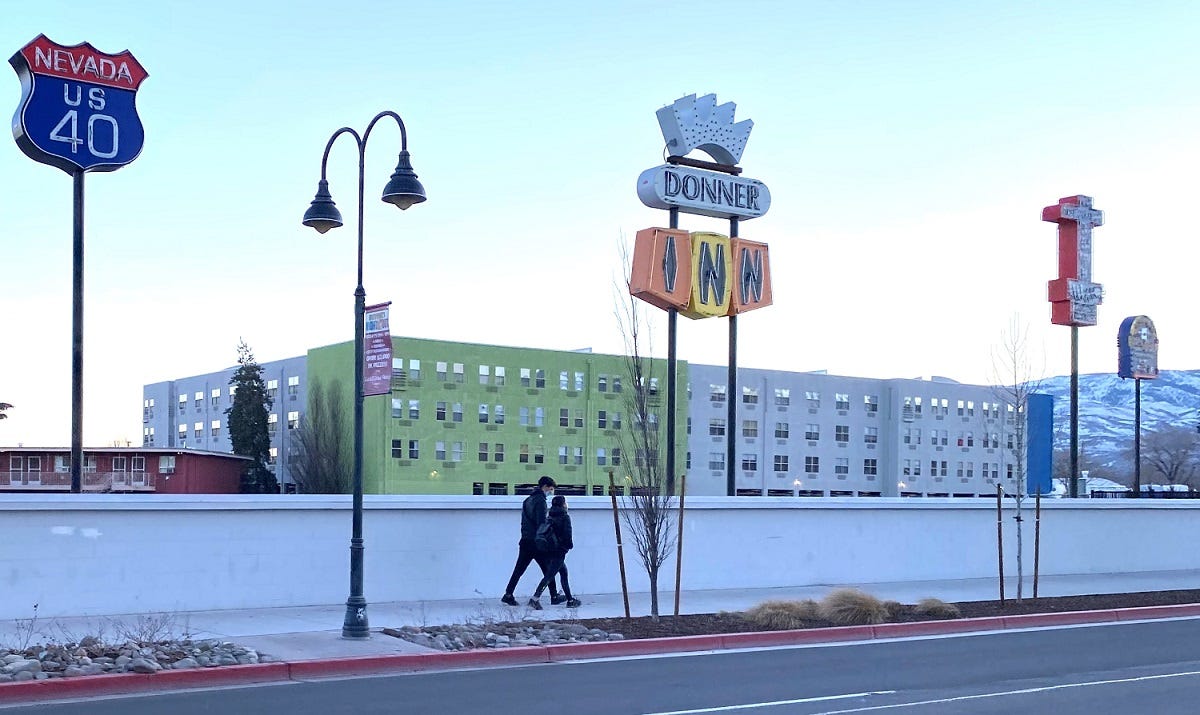
Jacobs Entertainment has requested pedestrian amenity credits for the features it already installed along the south side of West 4th Street, including a wall that extends all along their property line straight up from the sidewalk’s edge, higher than the heads of children and many adults; “tribute” (i.e. replicas but for one) neon signs triumphantly displayed high on tall poles like the heads of the conquered; and playa-scale sculptures that can only be fully perceived from a distance (or in unpopulated photos provided to the media). (p.s. Yesco is a phenomenal company that makes fabulous signs—read more on that here—this is about the signs’ context, not quality.)
In the January 10th community meeting, Jacobs VP Jonathan Boulware provided what was perhaps the most candid explanation of the company’s perceptions of West 4th Street—what the company believes it has been (a blighted high crime area where no one dared to walk), what it is now (vacant lots as an important stage of “rebranding”), and what they’re focusing on next (improving and rebranding the Sands Regency, as the “centerpiece” of the “district”). You can watch those 4-5 minutes here, and as you do, I invite you to ponder just who benefits from this “rebranding” and who does not.
Jacobs has now applied for a Conditional Use Permit to improve its “Glow Plaza and Festival Space” between Ralston and Washington Streets, immediately adjacent to the Onyx and Sarrazin Arms apartments. The fenced-off space would house periodic performances and events, and sit unused the rest of the time. You can watch Garrett Gordon’s presentation about it at the January 31st Ward 1 NAB meeting here and read his letter arguing for its accordance with the Mixed-Use (MU) Downtown and Northwest Quadrant Zoning here. I don’t see anything referring to the Master Plan’s Urban Corridor guidelines, though (see above). Gordon heads to the Ward 5 NAB meeting this Tuesday and to the Planning Commission several weeks after that, and I’m hoping for robust discussion about the Master Plan at both.
Now listen. I understand the limitations of planning. I know that sometimes, an idea comes completely out of left field and opens up a whole realm of possibilities that an existing plan could never have anticipated. And when that happens, it’s tempting to just throw caution to the wind and see what happens. But this is a city, not a romance novel. And when residents of a city have devoted so much time and energy to the adoption of a Master Plan, those residents deserve open and thorough discussion of precisely what warrants any deviation—much less drastic departures—from that plan, or from the definitions embedded there and in the development code, as I’m afraid this problematic Development Agreement with Jacobs Entertainment has done.
It takes time, energy, and careful attention to analyze the potential implications of those proposed deviations and departures, and it’s not easy (believe me!) to challenge those who are determined to secure them. But if we truly believe in Reno, in its revitalization, in its Master Plan, and in the principles of placemaking, then we have to recognize the need for ALL of our streets and neighborhoods to become ever more meaningful, functional, and livable for ALL of us, with no exceptions. If we don’t, then the City risks losing the trust of its residents, who rely upon our City’s staff and elected representatives to protect and promote the public interest on our behalf.
As always, you can view my prior newsletters, with more context, analysis & tips, on my Substack site and follow the Brief on Twitter, Facebook & Instagram. If you feel inspired to contribute to my efforts, I have a Venmo account at @Dr-Alicia-Barber and would be grateful for your support. Thanks for reading, and have a great week.

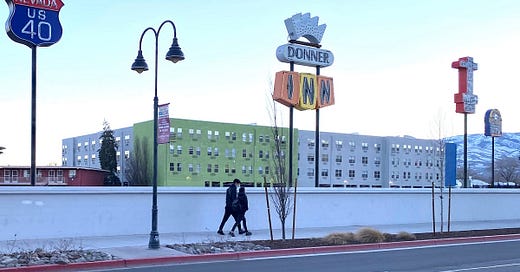


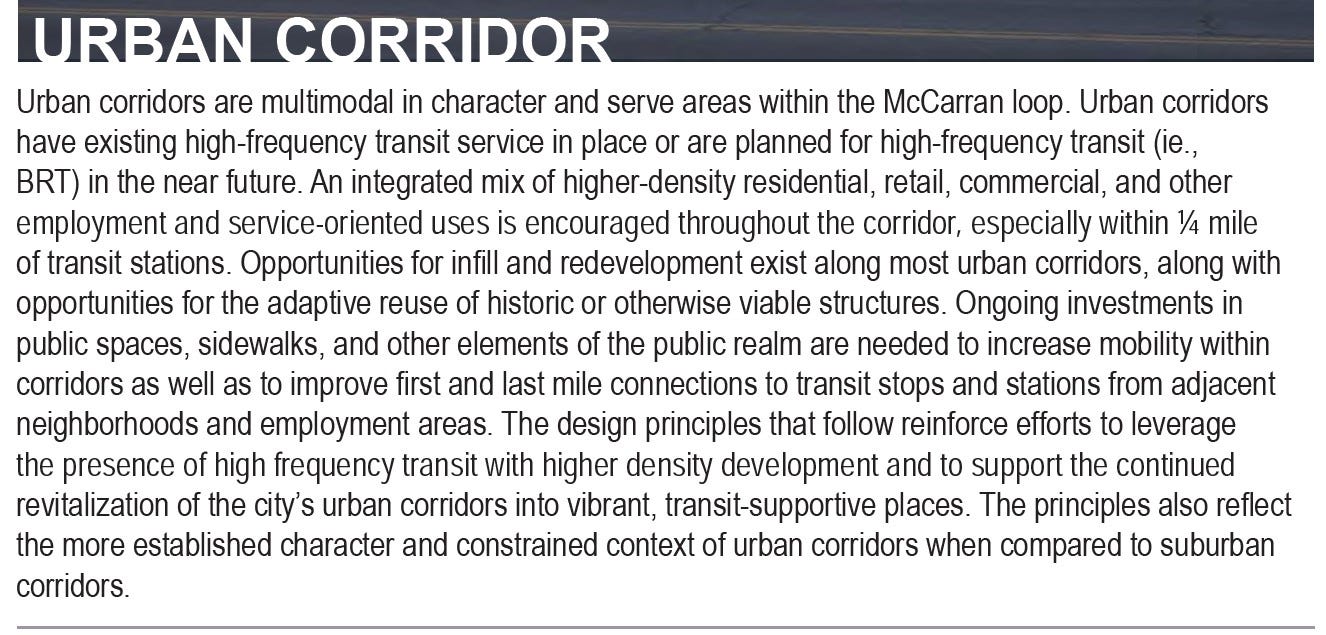
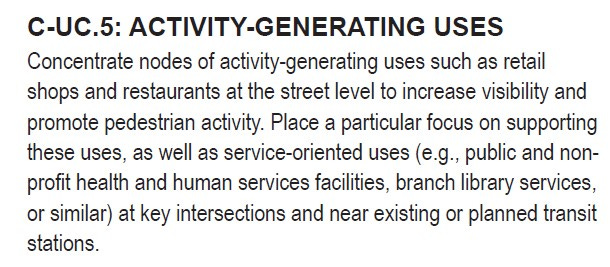
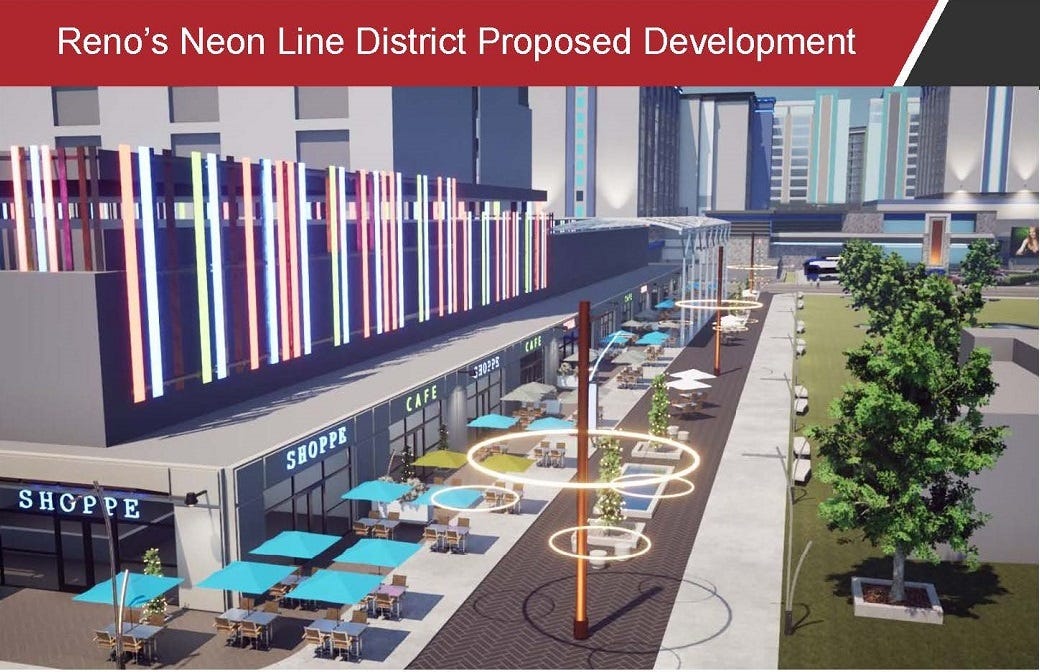
Alicia proves once again she is one of the leading voices for community and stakeholder engagement within the home we all share. While I don't agree with 100% of her advocacy positions, I respect 100% of her ability to explain her analysis to those of us with a passion for co-creating community, yet don't have the professional experience she and other experts have.
All readers: please share this article.
Encourage subscribing to everyone who loves traditional Reno, loves what Reno is now, and loves the community Reno can become as the Exponential Twenties unfold and we all work together to co-create our future!!!!!
This being the first of Alicia's Briefs that I've read, I must say I'm impressed with the well-researched presentation as well as the way she's able to link events and consequences of actions together. Well done! I look forward to more Briefs.
One comment on the last sentence: the citizens have already lost trust in our city and county decision makers, due to the exact problem stated in the beginning of the article. Decisions are made based on $$$, special interests and campaign donations, which are just smaller reflections of how our national government operates.